Sissinghurst rose pruning trick – this will boost your blooms
Find out why you've been pruning your roses wrong and how to do it like the professionals
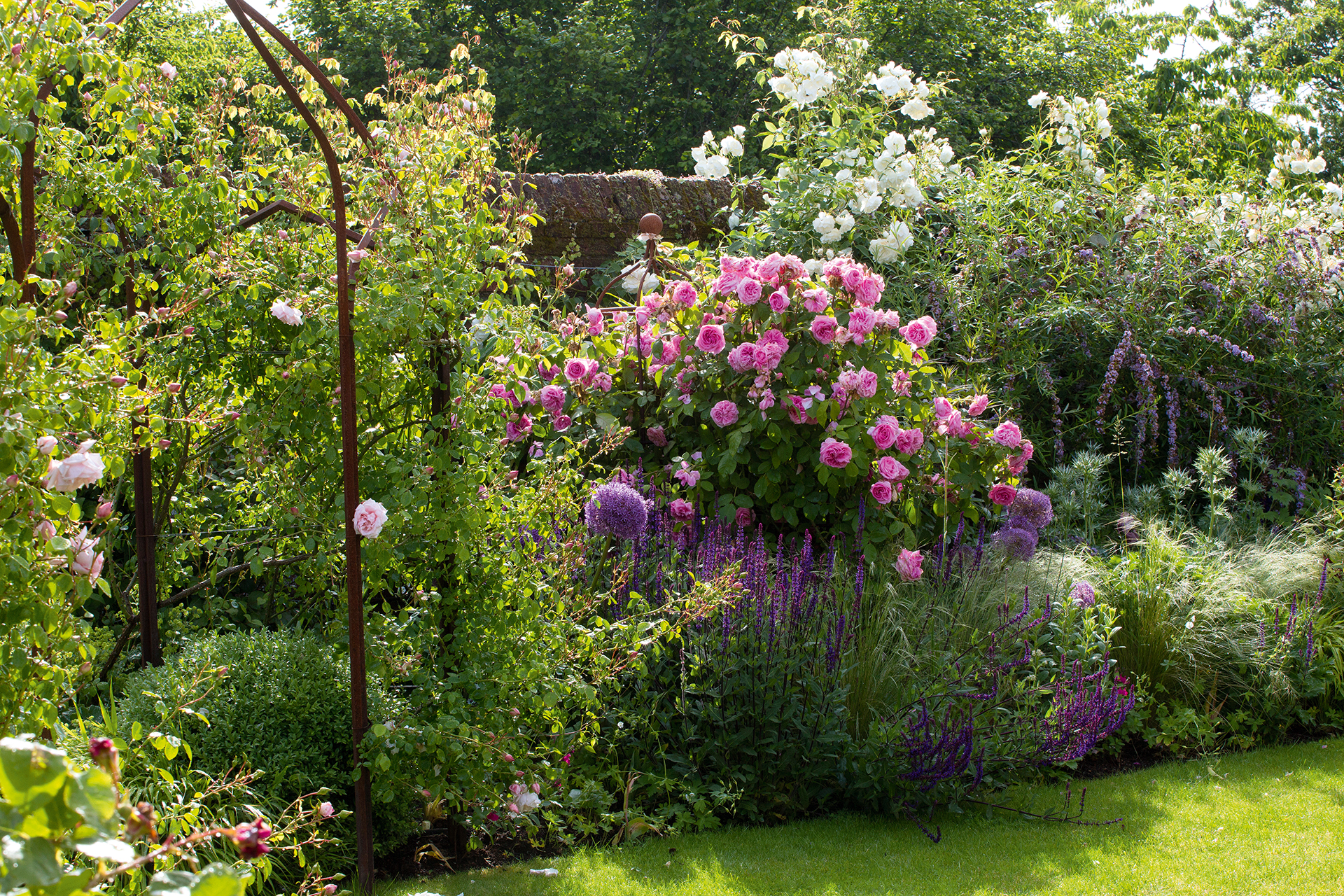

The roses of Sissinghurst Gardens in the UK countryside are arguably the world's best. With abundant fountains of blooms filling the air with their sweet fragrance, they are the envy of rose-growers everywhere. And these abundant displays are all down to their pruning.
'The rose pruning philosophy can be summed up as "treat them mean, keep them keen"' says gardener and floral expert Sarah Raven. 'If you put every stem of a rose plant under pressure, bending and stressing it, the rose will flower more prolifically.'
Read on to discover a clever rose pruning trick from the professionals at Sissinghurst, and all your friends will be asking for your rose growing secrets come the summer.
See: How to plant roses – an essential guide
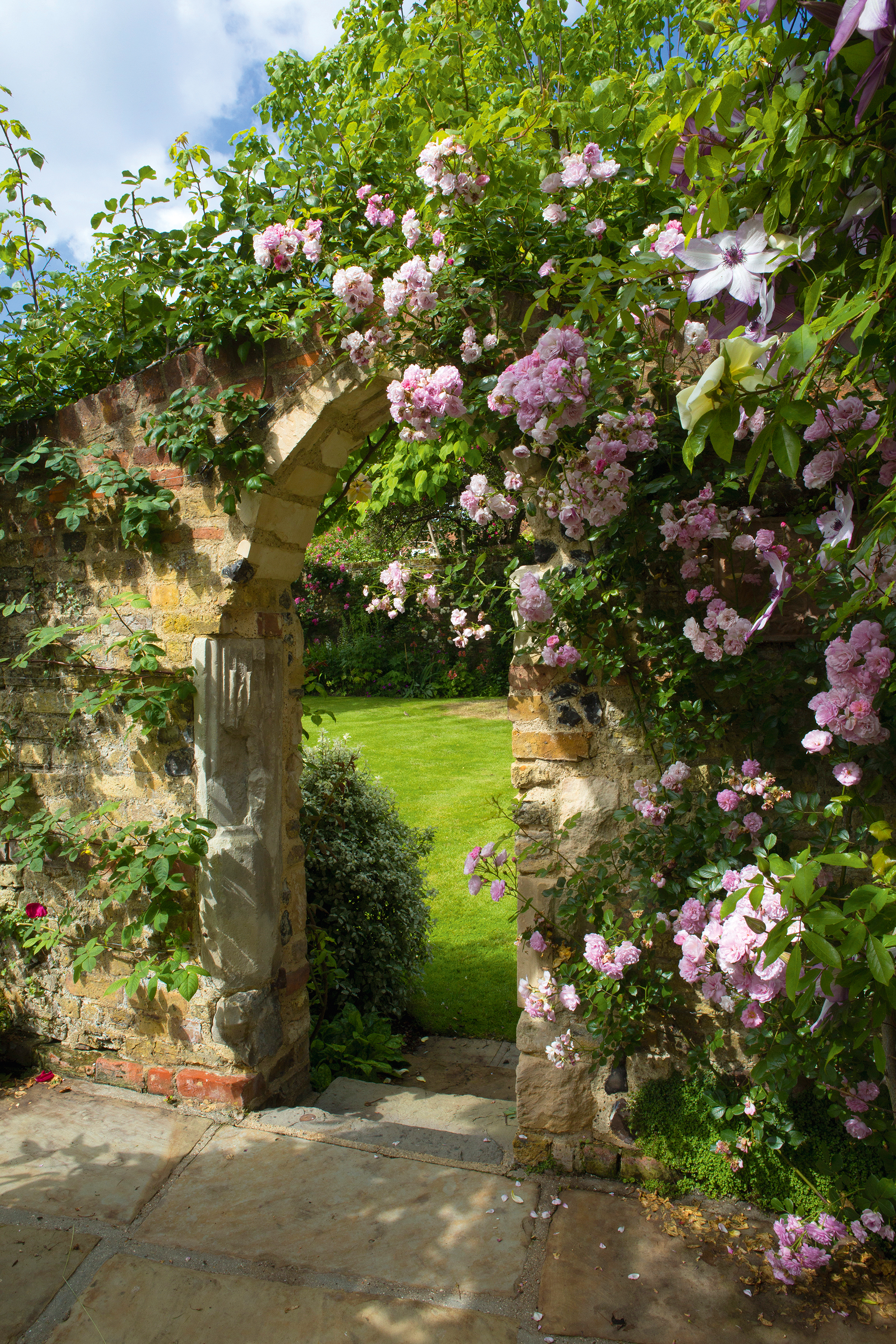
The Sissinghurst rose pruning trick
The Sissinghurst pruning method was created by the garden's first head gardener Jack Vass in the 1930s. His debut of the heavily trained technique did not meet the approval of the garden's creator, author and gardening expert Vita Sackville-West who prefered to let her roses grow wild.
However, the profusion of flowers the following year, with their blousy blooms and rich fragrance saw her converted.
Joshua Sparkes, the head gardner at Forde Abbey, who also uses this method, says, 'Instead of the traditional rose prune of cutting back to three buds and taking out a third, the idea was to arch the stems over in a bend, and tie them in.'
Design expertise in your inbox – from inspiring decorating ideas and beautiful celebrity homes to practical gardening advice and shopping round-ups.

Sarah Raven, who lived at Sissinghurst Castle for eight years, is also a convert to this method and shares the details on her must-read blog.
'The great Sissinghurst trick to pruning roses is meticulous work behind the scenes earlier in the year, when precision horticulture guarantees that wonderful romantic effect.' says Sarah.
To help you on your way to professional blooms, we've collated Sarah's top tips for pruning roses the Sissinghurst way, read on to find out how.
See: Rose garden ideas – for a colorful and sweetly scented outdoor space

For pruning climbing roses, 'we start the rose pruning in October. Beginning with the wall trained roses and then move into the borders,' says Sissinghurst Gardener Jo Jones.
The process begins with removing the majority of last year's growth so that the rose's elegant skeleton remains. This prevents it becoming too woody and fosters good growth next year.

'Any thick, woody stems are cut out at the base to encourage new flowering shoots next year.' explains Sarah Raven.
The remaining stems are then re-attached to the wall with the pruned tip of each branch bent down and attached to the one below. Try to create a uniform pattern that will look neat and tidy when in bloom.
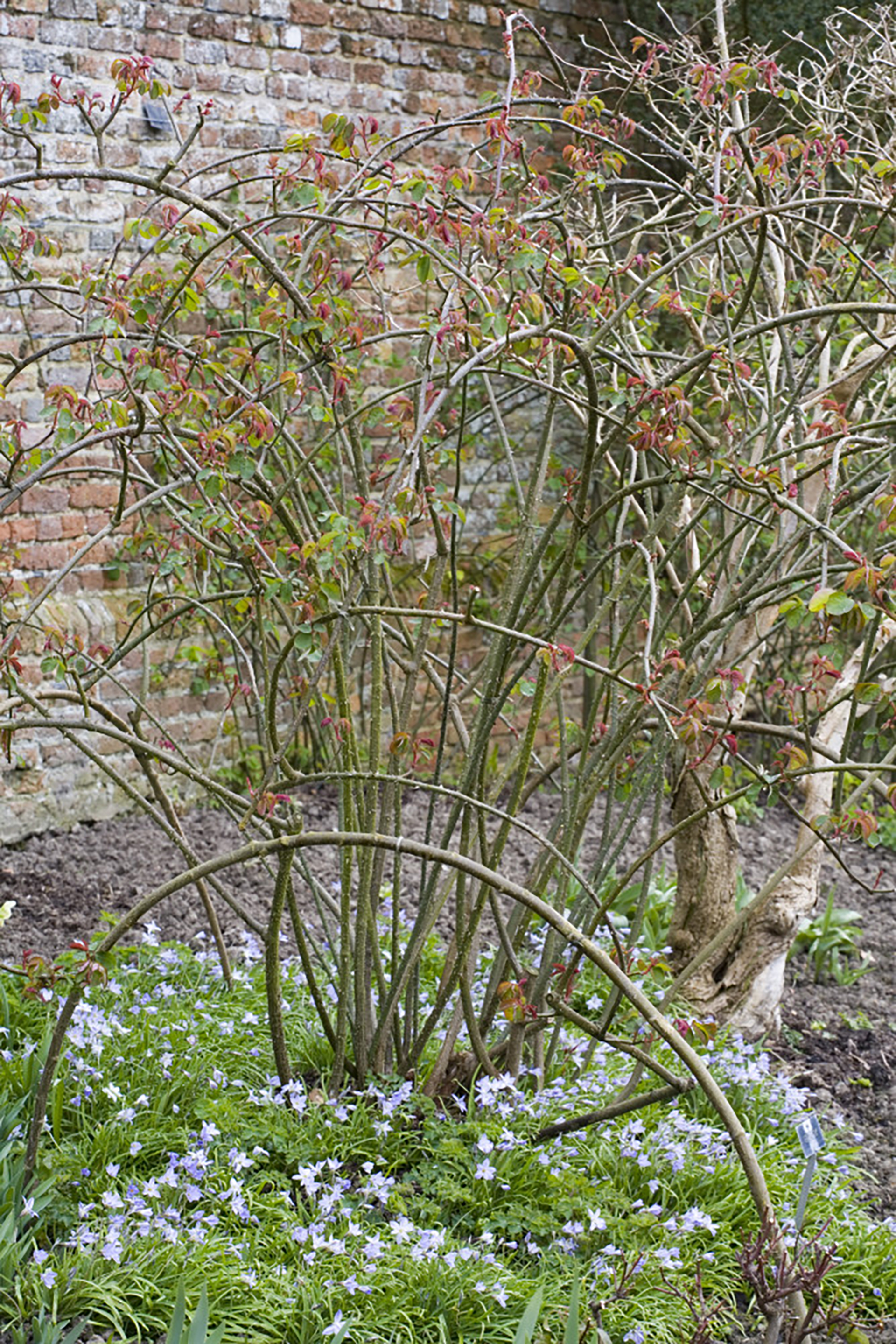
Pruning shrub roses starts with removing any old and diseased wood, as you do with the climbers. These are then bent in the desired shape, though the shape in which they are bent will vary depending on the variety of the shrub.
'Tall bush roses with stiff branches are twirled up a frame of four chestnut or hazel poles. Every pruned tip is bent and attached to a length below.' says Sarah Raven
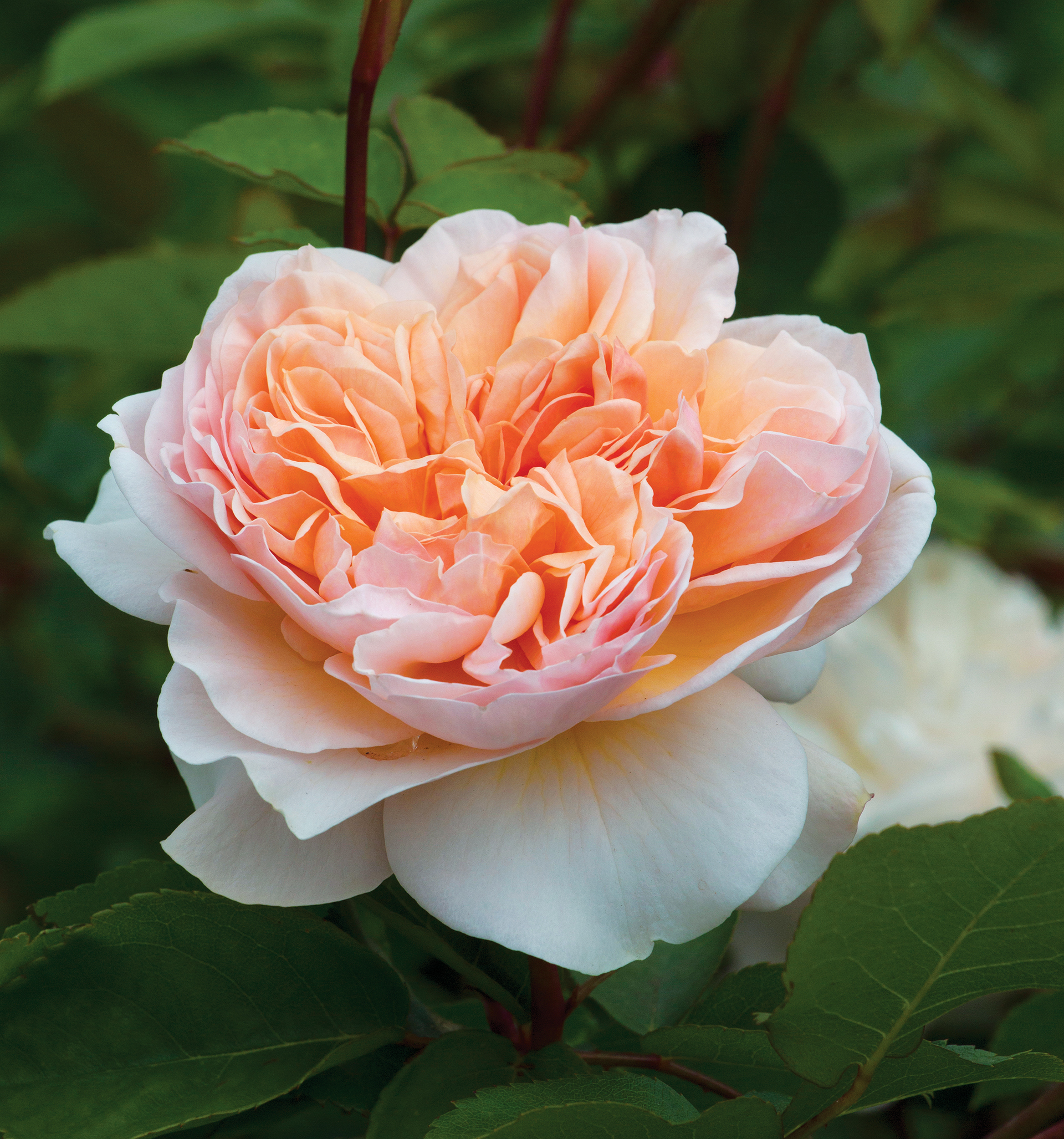
'The big leggy shrubs, which put out great, pliable, triffid arms that are easy to tie down and train, are bent on to hazel hoops arranged around the skirts of the plant,' continues Sarah.
The outward branches are tied in first, and then work inwards to create an intricate web. 'Without any sign of a flower, this looks magnificent as soon as it's complete, and in a couple of months, each stem, curved almost to ground level, will flower abundantly.' says Sarah.
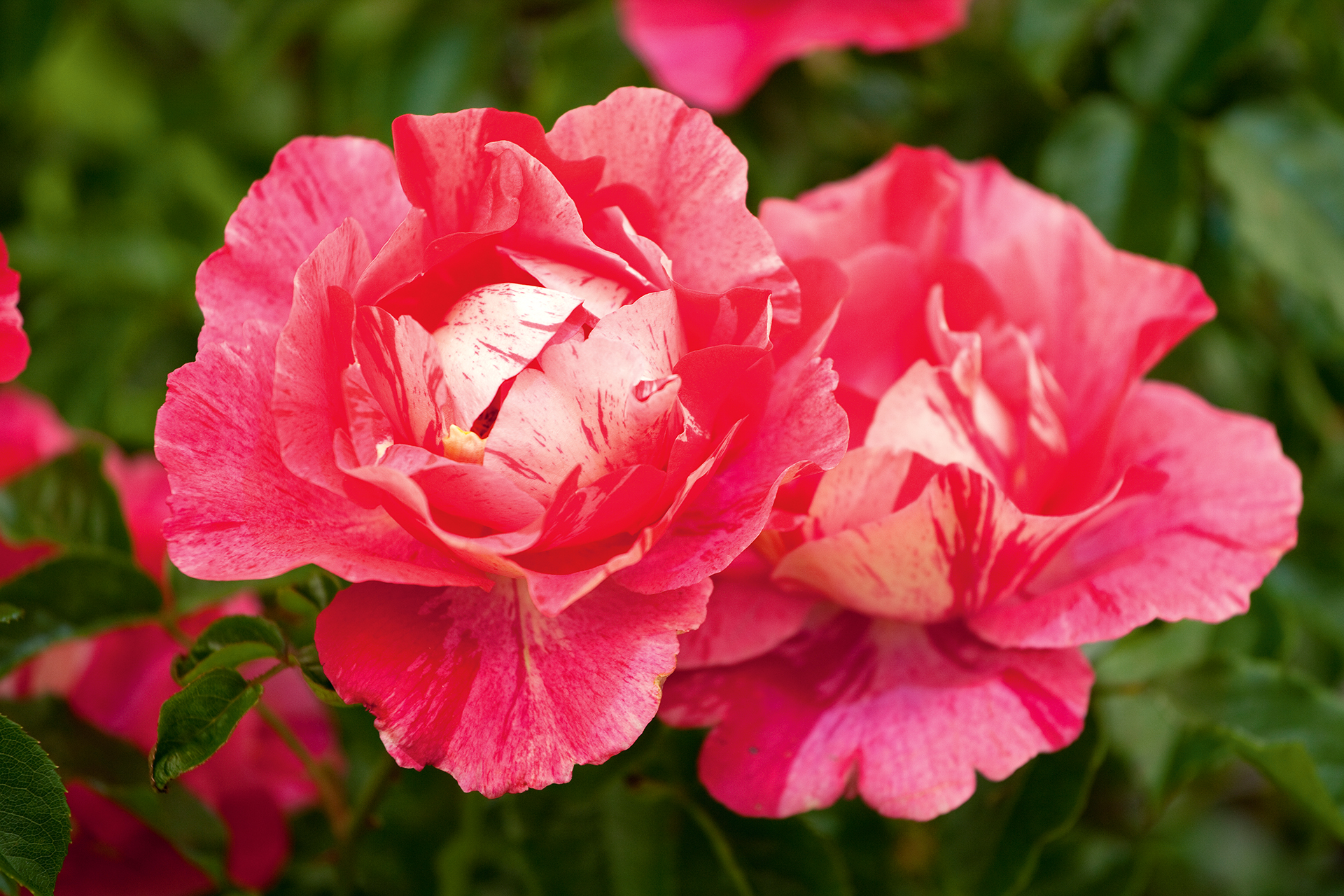
See: How to deadhead roses – for more flowers in a matter of weeks
Contained varieties that don't need much attach or those with stiff, non-pliable branches are the easiest to prune. Simply cut them back hard and then attach each bush to a single stake. The stake should be a similar height to the pruned bush. 'This will stop them toppling as they grow in the summer months.' says Sarah.

Having graduated with a first class degree in English Literature, Holly started her career as a features writer and sub-editor at Period Living magazine, Homes & Gardens' sister title. Working on Period Living brought with it insight into the complexities of owning and caring for period homes, from interior decorating through to choosing the right windows and the challenges of extending. This has led to a passion for traditional interiors, particularly the country-look. Writing for the Homes & Gardens website as a content editor, alongside regular features for Period Living and Country Homes & Interiors magazines, has enabled her to broaden her writing to incorporate her interests in gardening, wildlife and nature.